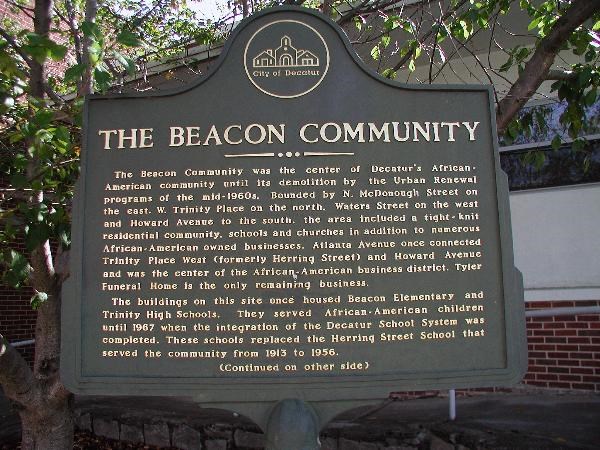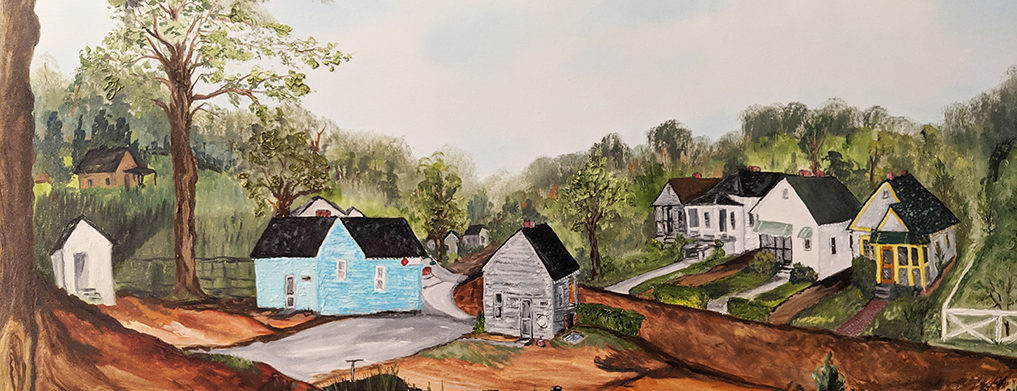Places
Neighborhoods
On January 19, 1915, the Mayor and General Council of Decatur adopted an ordinance that racially segregated the town block by block, mostly based on existing business and residential districts. On September 2, 1938, city commissioners adopted an ordinance “prohibiting white and colored living under same roof,” “except in such instances as the relation of Master and Servant exist,” though even then separate quarters and even sanitary facilities had to be provided. (Book 6, p. 291)

The most prominent segregated African American neighborhood in Decatur was Beacon, also known as “The Bottom,” due to its low-lying location, which was prone to flooding. In fact, there have been historic African American communities across the United States known as “The Bottom” or “Black Bottom,” including in Detroit, Philadelphia, and Nashville. By the time Decatur’s Bottom became known as Beacon in the 1950s upon the naming of the new African American school Beacon Elementary, generations of African Americans had been living there.

Due to decades of urban renewal, all that physically remains of Beacon is the Beacon Municipal Center, which was built on the site of the African American schools of Decatur and incorporates the gym of Trinity High School. Thanks to the tireless efforts of Mayor Emerita Elizabeth Wilson and other elders of the community, Beacon lives on in public memory. To read more about Beacon, you can visit the City of Decatur web page on the community and even download a brochure.
Beacon, however, was not the only segregated community in Decatur. There also existed other areas of town, including “Black Barry,” which was the segregated portion of Barry Street (now Commerce), and a region that ran along the Decatur Cemetery, among others. These communities have mostly vanished from public memory but there are ongoing efforts to research the areas as well as the residents who once lived there.
Schools
The first school in Decatur to serve African American students was the Herring Street School, built in 1913. This school remained until 1956 when it was replaced by Beacon Elementary. In 1957, Trinity High School was built for African American students in the City.


Image courtesy Sylvia Kemp Clark
Churches

Image courtesy of Sylvia Ann Kemp Clark
Several churches have served African American congregations in Decatur since 1868. Most were located in the Beacon community.
– Antioch AME
– Trinity
– Thankful Baptist
– Lilly Hill Baptist
– Apostolic Holiness
– Mt. Zion Baptist
– New Bethel AME
– St. James Presbyterian
It was very common for congregations to participate in each others’ special programming and events. The African American churches of Decatur were more than places of worship; they were central to the community’s educational, healthcare, and political activities, as well.

Image courtesy Sylvia Kemp Clark
